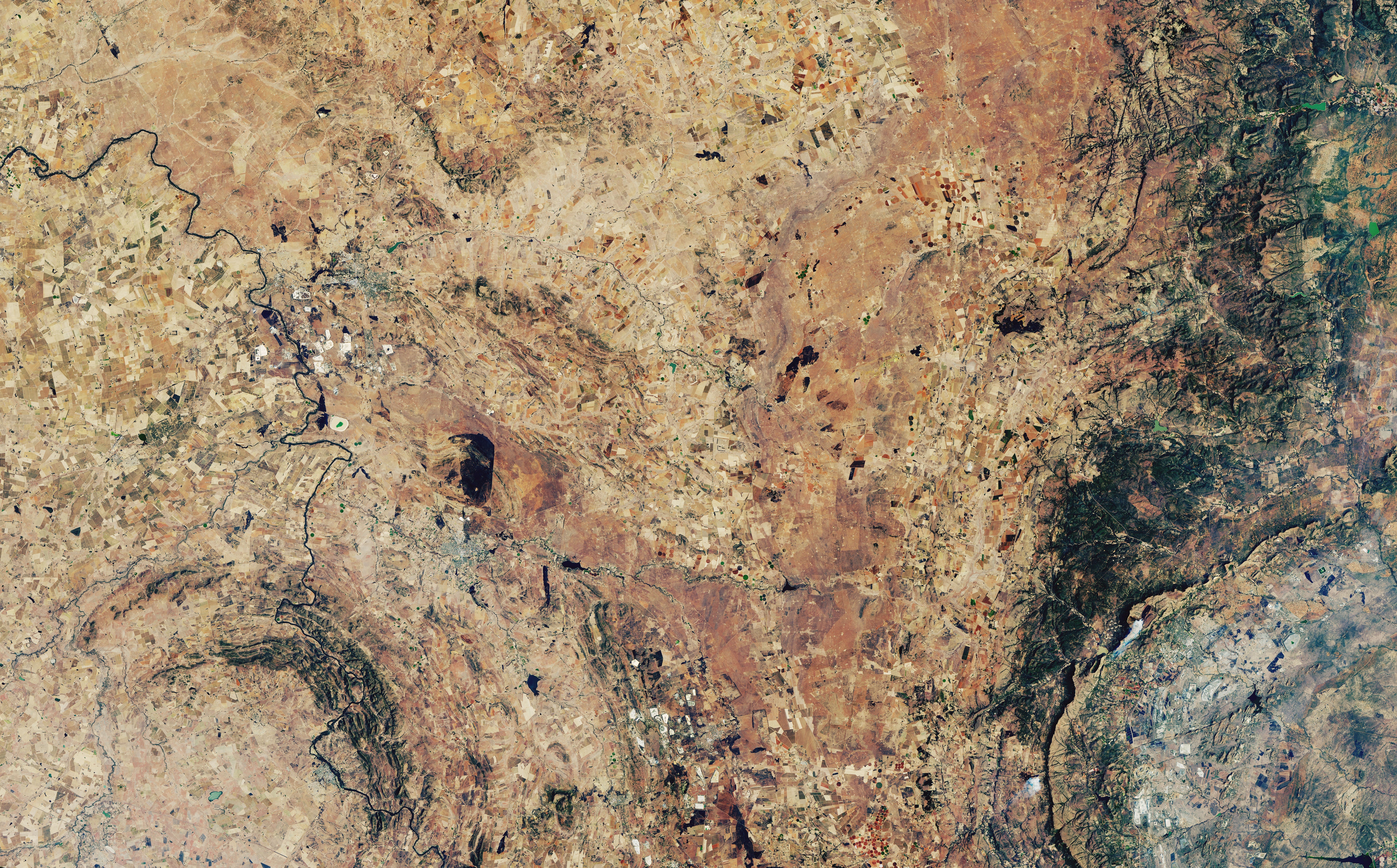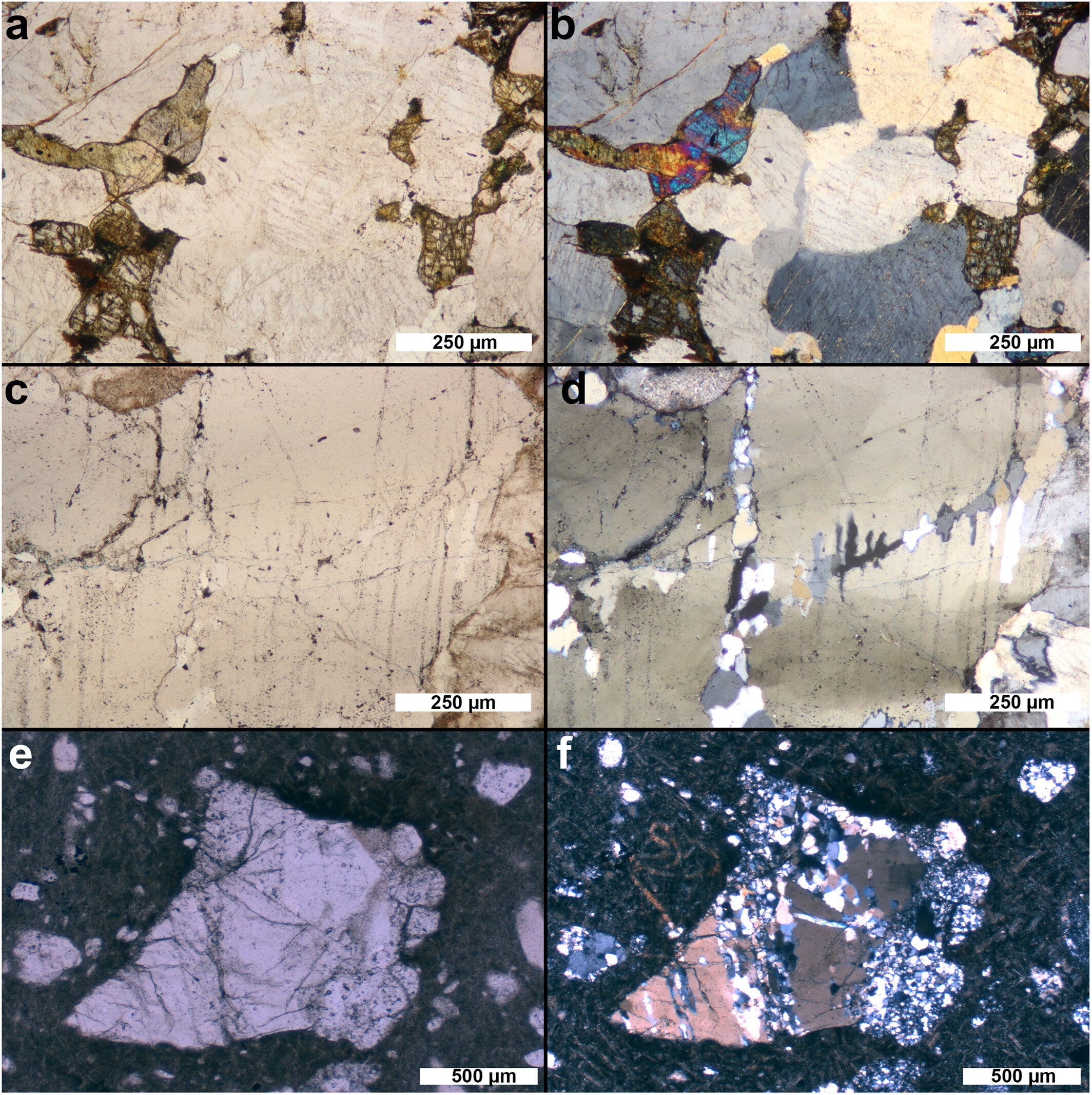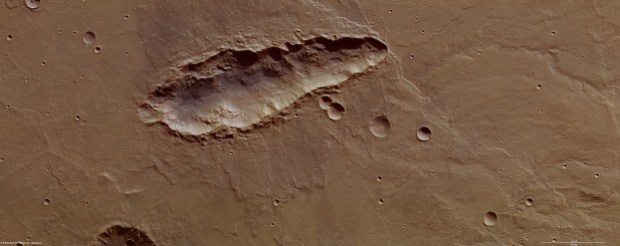
Located in South Africa is the Vredefort Crater measuring 25 miles (40 km) deep and 62 miles (100 km) wide. It is the world’s oldest and largest known impact structure. Credit: NASA Earth Observatory/Lauren Dauphin/U.S. Geological Survey.
The most common features on the surfaces of most of the solar system’s rocky bodies are impact craters. Many measure hundreds of kilometers across and have remained relatively unchanged for several billion years. On Earth, however, the majority of ancient impact sites have disappeared due to plate tectonics and the erosive effects of wind, water, and ice. In fact, no impact structures from the first half of Earth’s history have yet been discovered.
To test the possibility that such craters could still be around, a team of researchers led by planetary scientist Matthew S. Huber of the University of Western Cape in South Africa decided to collect and analyze rock samples from a 2-billion-year-old impact site located southwest of Johannesburg in South Africa.
A Deep, Wide Basin
The Vredefort impact structure is the world’s largest known impact site, spanning 300 km across. It formed when an asteroid with a diameter of at least 20 km slammed into the bedrock. Unlike smaller impacts that create bowl-shaped indentations, the Vredefort impact formed a deep basin consisting of multiple terraces. The impact and resulting shockwave produced a vast array of vaporized, melted, and fractured rocks, many of which were buried under massive amounts of falling ejecta.
Since the impact, 10 km of erosion has scraped away much of the crater, leaving a stretch of low hills known as the Vredefort Dome, and some small amounts of the melt rocks that have been preserved in several dikes.
“We were walking on rocks that were once buried below the surface when the impact formed,” says Huber of a recent visit. The team extracted 11 rock samples along a 22 km transect from the center of the impact to the dome hills.
A Closer Look

In these rock samples, found at the Vredefort site, scientists look at crystalline structures caused by impacts to Earth’s surface. Credit: Matthew S. Huber, E. Kovaleva, A. S. P. Rae, N. Tisato, S. P. S. Gulick
After analyzing the minerals inside the rock samples, the team discovered that each had microscopic fractures and deformities in their crystalline structures due to the blast’s shock wave. In addition, two of the rock samples consisted of melted rocks that had not yet been eroded.
But when the team performed geophysical surveys to measure and compare the densities and porosities of the rock samples relative to deeper rock layers not affected by the impact, they found no differences. This is because the exposed rocks at Vredefort are from very deep in the impact structure where they were originally squeezed together by the ejecta from the impact that buried them. “It’s as if the rocks had healed and didn’t experience the impact,” says Huber.
By contrast, the similarly-sized Chicxulub impact structure left behind by the asteroid that struck the Yucatán Peninsula 66 million years ago — which caused the extinction of the dinosaurs — hasn’t been eroded at all. Hence, rocks close to the surface haven’t carried the weight of overlying layers and are still less dense and more porous than surrounding rocks, due to the impact.
Considering that most impact structures have been discovered inadvertently, and that analyzing mineralogical evidence for impacts is only performed when other indicators such as geophysical surveys show that an impact site could exist, the chances of discovering the remnants of very old impact craters is remote.
“The team makes a good point that it’s likely that much of the record of the Archean or older craters has been removed by erosion,” says Steven Jaret, a planetary geologist at the American Museum of Natural History and The City University of New York. Jaret was not involved in the current study.

An elongated impact crater 48 miles (78 kilometers) long and almost a mile deep, found on the martian surface. Credit: ESA/DLR/FU Berlin (G. Neukum)Defying the Odds
If geologists discovered an impact structure from the first half of Earth’s history, the rocks within it could help answer questions about what the early solar system was like, including Earth’s early history. For example, many craters on the Moon and Mars are believed to have formed during periods of more frequent and intense impacts known as the Late Heavy Bombardment (LHB). These pulses are thought to have begun about 3.8 billion years ago, possibly caused by the scattering of asteroids by giant planets, most notably Jupiter. But planetary scientists still disagree over the role the LHB played. The discovery of older craters on Earth could help resolve lingering questions.
“Vredefort could have happened on the tail end of some versions of the LHB or perhaps it was one of relatively infrequent big impacts,” says Huber. “Right now, we just don’t know.”
Ancient craters could also provide insight into the processes that shaped Earth’s surface and mantle. Before plate tectonics, asteroid impacts would have been the dominant process that changed the surface. “Impacts might have even played a role in creating early continental crust,” says Jaret.
And although the chances that the remnants of ancient craters are still around isn’t likely, surprises could lie in the future. Jaret says that if such craters do exist, they might be in places that have experienced limited erosion or where they were buried by thick layers of sediments that wind, water, or ice would have had to work through before significant erosion could occur.
“There are lots of craters on Mars that were subsequently filled with sediment and re-exposed, so you never know,” says Jaret.





